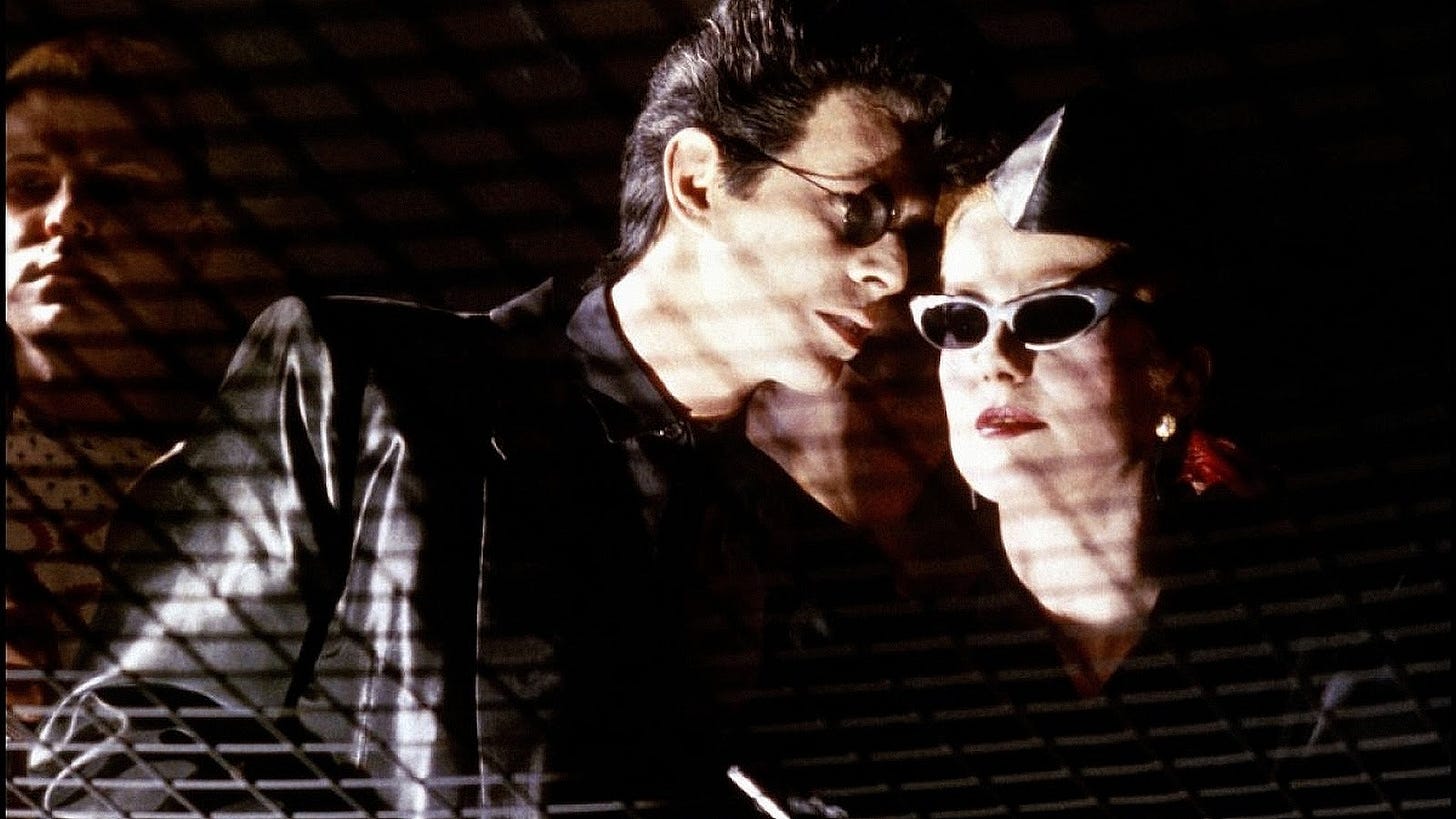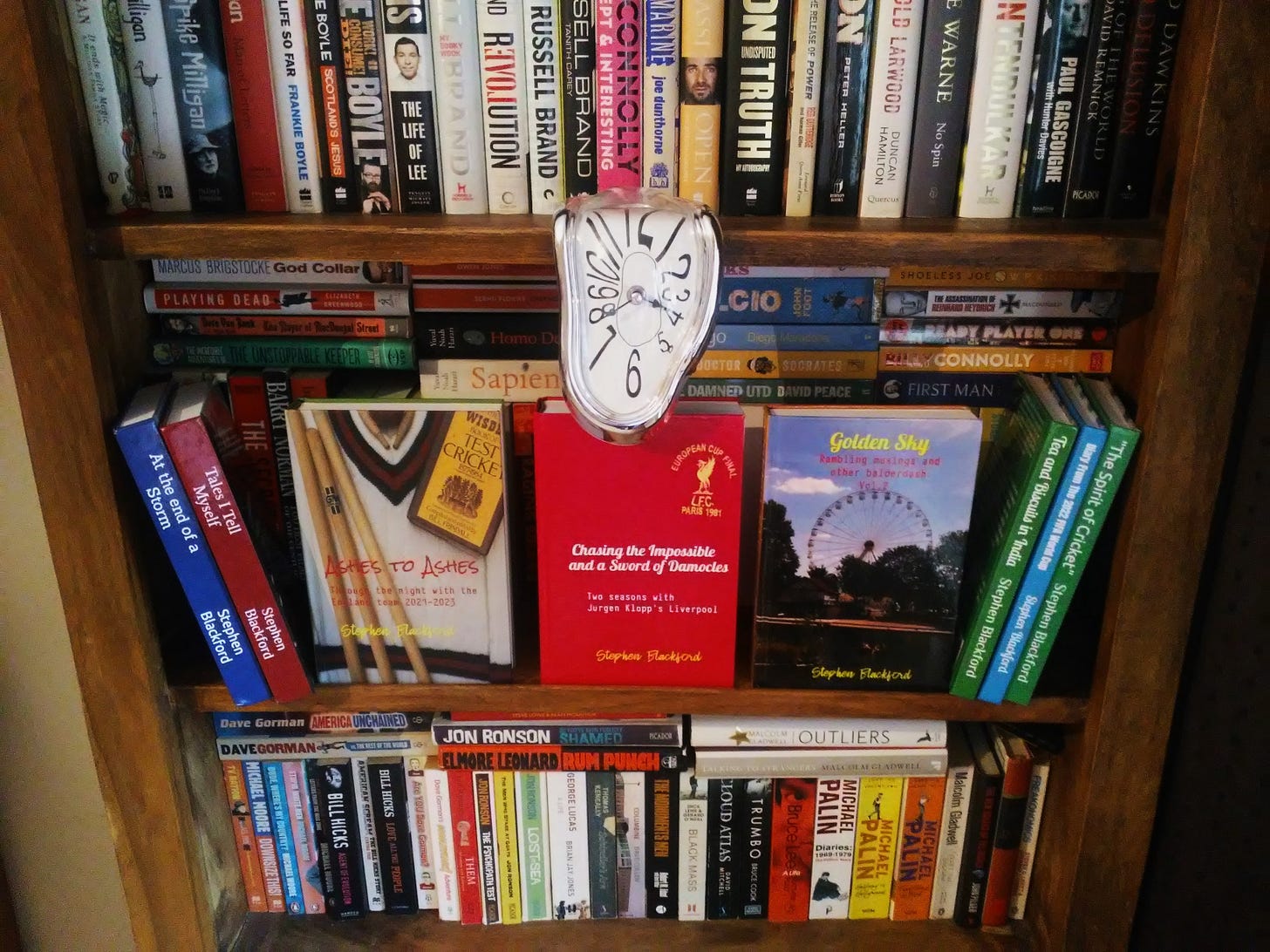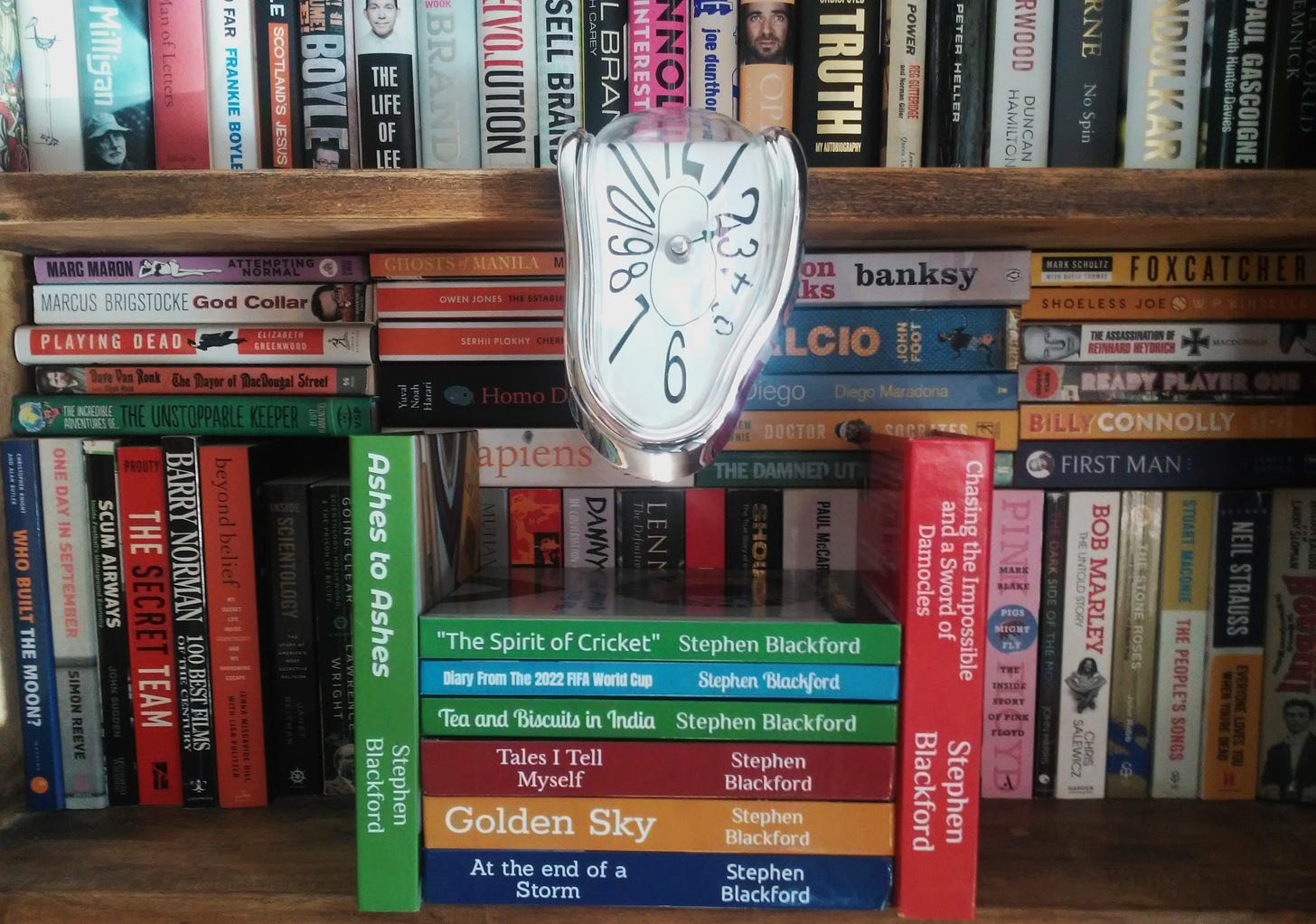
Originally penned and published in 2013, I’ve now paired this spoiler free review with my Youtube channel (@TheBlackfordBookClub) reading of this review recorded late last Summer so you can, if you wish, “read along” with me, and a man sitting cross legged beneath a favourite Salvador Dali framed print reading his own words direct to camera.
The metamorphosis of narcissus?
No. It’s called “Mountain Lake” and it’s rather beautiful.
That’s an in-joke strictly for fans of Salvador Dali and for everyone else, here’s something more cinematic to get your teeth into. Enjoy.
"The Hunger" (1983) - original article
"Tony Scott (1944–2012). A Cinematic Legend" - original article
"The Essential Film Reviews Collection Vol.7" - available via Amazon
Tony Scott’s first cinematic release as a Director is best watched knowing as little as possible about the film and what a film it is! Disturbing and bizarre, but ultimately an immediate favourite of mine that perhaps gives too much of an insight into my own psyche! So, giving away as little as possible in terms of spoilers, here’s my dissection of the opening six minutes and a brief background to the three main characters involved.
The disturbing opening is a frantic mix of quickly cut shots, of a band (Bauhaus) and their lead singer inside a cage, cut against a nightclub scene with “John” (David Bowie) and “Miriam” (Catherine Deneuve) watching provocative dancers on the dance floor from their balcony position. Miriam is chain smoking, indistinct occasional chatter with John who stares ahead impassively. Both are wearing sunglasses. With occasional jump cuts to a car driving across a bridge, these cuts gain frequency and are seemingly more random, now with a mournful synthesizer beat replacing the song from Bauhaus, and a singer still caged.
The cuts become more frantic now, from the still caged singer to the inside of the car. Inside, John and Miriam are sat in the front, with the two dancers from the nightclub in the back seat. Numerous close ups on all passengers, Miriam still smoking and still staring ahead impassively, John driving, similarly impassive. Arriving at a remote mansion style house, the cuts remain quick between a still caged singer but who has now stopped singing and is staring straight ahead at the camera, his hands gripping the bars of the cage, and of John and Miriam, and their two guests. The male dancer is relaxed and smiling as the female dancer, clad in black leather, dances and smokes against a white screen, producing a gorgeous silhouette, whilst all the while Miriam, still smoking, stares ahead impassively and John, a slight smile now, enjoying the show.
The first words of the film, a muffled “no ice” from John prompts the young lady dancer to go to the kitchen, whereby John and Miriam share a knowing look! The singer, still caged and gripping the bars of the cage is cut between and then replaced by, a distressed and angry monkey in a cage. The caged monkey, it’s anger rising, is now cut between Miriam straddling the male dancer, ripping his shirt off in lust, and of John seducing the young female dancer in the kitchen. The foreplay of each situation is frantic and full of passion, of tongue’s darting into each other’s mouths and of extreme close ups depicting this. Juxtaposed against this now is the caged monkey, more and more distressed amidst cries of pain, anguish and anger. This highly disturbing opening six minutes ends in the gushing of blood and anger, from the dancers and a mutilated monkey, of two Egyptian Ankh symbols dropped onto a table covered in blood, to a pristine white sink, and of hands washing away copious amounts of blood.
Your interest no doubt piqued, here is a brief introduction to the three main characters:
“Miriam” (Catherine Deneuve) A chain smoking, quiet and reflective performance, that is equally frightening, brilliant and heart breaking.
“You’re part of me now, and I can’t let you go”.
“John” (David Bowie) Deeply in love with Miriam and leading a seemingly idealistic and bohemian lifestyle. With minimal, muffled dialogue at times, constantly in shadow and unable to sleep, it appears that John is constantly lucid dreaming or working through his life and existence through flashbacks.
“Sarah” (Susan Sarandon) A medical researcher and author and a great early performance from a young Sarandon.
With a small supporting cast (Willem Dafoe in a minimal cameo!) the two stand outs are Cliff De Young as “Tom” and a brilliant performance from the youngest cast member, Beth Ehlers, as “Alice”. Assisting Director Tony Scott, great credit must go to Director of Photography Stephen Goldblatt, Editing from Pamela Power and a host of credited make up artists for their spectacular efforts. With original music from Denny Jaeger and Michel Rubini providing a strangely haunting 1980’s style score and the use of Franz Hubert’s “Piano Trio Number 2” accompanying this gothic horror, I can’t recommend this first Tony Scott directed movie highly enough.
Based on the original Whitley Strieber novel, the violence is often oblique and bloody, yet fleetingly so, except one particular scene. Always intriguing, interesting and bizarre on first watch it gains even more so on repeated viewings, the intensity gaining momentum as the film does likewise. Disturbing yet brilliant, there are so many key scenarios, hints and especially juxtapositions throughout the film (and those hardly souls who’ve read my previous film articles will know I love a good juxtaposition!), but to list them or even hint at them would lead to inevitable spoilers and that as always is not my intention.
Nearly 30 years since it’s original release, the film has aged a little but still retains a raw intensity and an engaging quality that still resonates.
A high quality debut release from Director, Tony Scott.
Thanks for reading. I hope this message in a bottle in The Matrix finds you well, prospering, and the right way up in an upside down world.






